Lush and green Costa Rica, the gem of Central America, is often marketed to younger, adventure-seeking tourists. It’s true that Costa Rica is a great place to zipline through jungles, experience white-water rafting, and challenge yourself on some of the Pacific Ocean’s best surfing beaches.
But there’s plenty of charm and appeal in Costa Rica for us “more mature” travelers too. In this article, we’re going to look at why Costa Rica is worth adding to your retirement travel bucket list.
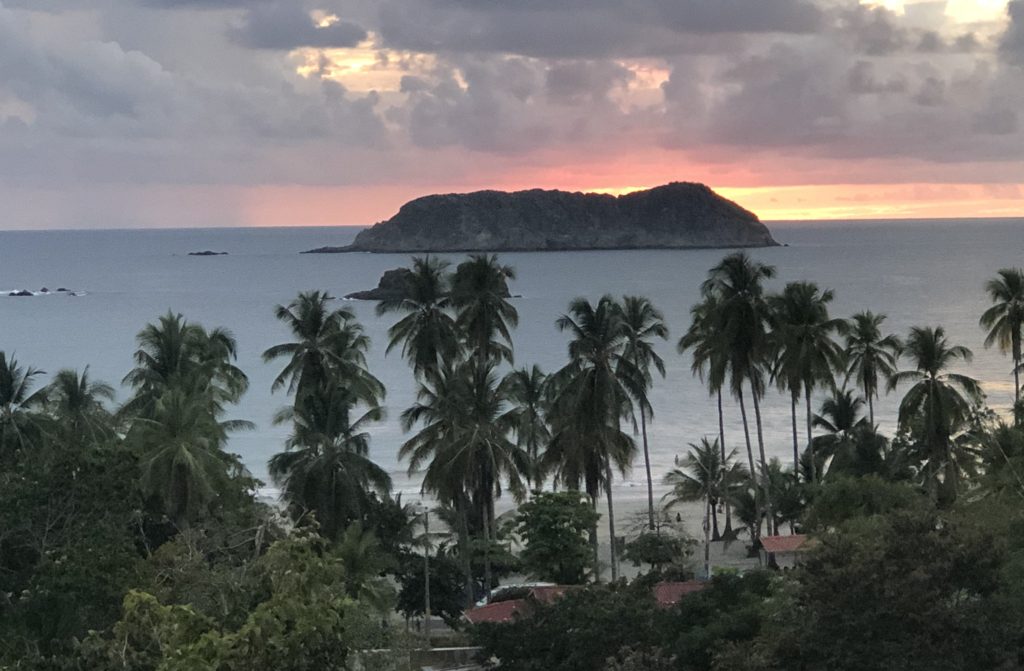
The land of Pura Vida!
You won’t be in Costa Rica long until you hear their famous greeting, “Pura Vida!” While the words literally translate as “simple life” or “pure life,” the phrase “Pura Vida!” carries much more meaning and emotion. Costa Ricans, or Ticos, use the term to say hello and goodbye, but the phrase also symbolizes the happiness and pride of the Costa Rican people in the simpler, less-stressed life they live in this richly blessed and peaceful land.
Kathy and I made our first visit to Costa Rica recently, fulfilling one of our many bucket-list destinations. In this article, we will share not only our impressions of Costa Rica but why we chose to see Costa Rica with an organized tour group. Unlike some travel articles you read, this one isn’t being paid for by anyone, so rest assured the advice we give you is objective and straight from us. Not that we don’t ever solicit ads or do sponsored stories on our blog, but this trip was just for our pleasure.
What Makes Costa Rica Special?
 Costa Rica is located in Central America, between Nicaraugua and Panama. It is a small country, less than the size of West Virginia, but with incredible eco-diversity of plant and animal life. Moutains run through much of the country, which is outlined by hundreds of miles of beautiful beaches on its Pacific and Carribean coasts. Costa Rica’s varied terrain includes volcanos, rainforests, green valleys, and some of the finest agricultural land anywhere, enriched over the centuries by volcanic ash.
Costa Rica is located in Central America, between Nicaraugua and Panama. It is a small country, less than the size of West Virginia, but with incredible eco-diversity of plant and animal life. Moutains run through much of the country, which is outlined by hundreds of miles of beautiful beaches on its Pacific and Carribean coasts. Costa Rica’s varied terrain includes volcanos, rainforests, green valleys, and some of the finest agricultural land anywhere, enriched over the centuries by volcanic ash.
Where Costa Rica differs from many of its Central American neighbors to the north, however, is in its relative prosperity, safety, and stable government. Costa Ricans are consistently ranked as among the happiest people on Earth. A 2019 Gallup World Poll ranked Costa Rica No. 12 in happiness out of 140 nations, higher than any other Latin American country – and notably higher than the United States (No. 19). Another source, the Happiness Index frequently ranks Costa Ricans as the No. 1 happiest people in the world.
Ticos even live longer. Average life expectancy is 79.6 years, one of the highest for any nation in the Western Hemisphere, according to the World Health Rankings. That’s better than the U.S., at 78.5 years. (The highest average life expectancy in the New World is Canada, at 82.8 years).
Beyond warm weather, lovely scenery, and nice beaches, the explanation for Costa Rica’s success lies largely with a decision made by the government in 1948 to abolish Costa Rica’s military and use the savings for universal healthcare and better education. Future administrations have built on that precedent, putting the welfare of the people and preservation of its land as high priorities.
Today’s Costa Rica has one of Latin America’s best healthcare systems, which covers all citizens. In fact, Costa Rica is a popular destination for “medical tourism,” where residents from the U.S. come to get quality healthcare at lower cost. Thanks to free and compulsary elementary and secondary education, Costa Rica has nearly 98 percent literacy, higher than any other Central American country.
As North American tourists, we appreciated that U.S. dollars are widely accepted at most merchants, the water is drinkable nearly everywhere, and while it’s helpful to know some basic Spanish terms, for the most part you can get by fine since so many of the locals speak English. This is especially true in hotels and areas popular with tourists.
Compared to some other places we’ve traveled, we also liked the fact that you could venture into towns and walk the streets safely. Crime occurs everywhere around the world, but Costa Rica is relatively safe. The more common crimes to worry about here are petty thefts, such as theft of personal goods from cars and handbags. Watch your stuff and your surroundings, but that’s good advice most anywhere.
What’s it like to retire to costa rica? Read our Q&A interview with Paul and Gloria Yeatman, authors of the blog, “Retire for Less to Costa Rica,” by clicking here.
Why We Opted for a Packaged Tour
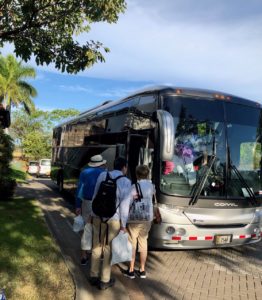 Being our first time in Costa Rica, we wanted to see as much of the country as possible. Not knowing the language or culture, we weren’t eager to simply show up, rent a car, and venture out, although that is exactly what many travelers do. Even though Costa Rica is small, getting around can be complicated, given the rugged terrain, road conditions, and lack of North American-style road markings. Driving in the capital city, San Jose, isn’t for the faint at heart.
Being our first time in Costa Rica, we wanted to see as much of the country as possible. Not knowing the language or culture, we weren’t eager to simply show up, rent a car, and venture out, although that is exactly what many travelers do. Even though Costa Rica is small, getting around can be complicated, given the rugged terrain, road conditions, and lack of North American-style road markings. Driving in the capital city, San Jose, isn’t for the faint at heart.
We looked at other options, such as cruise ships that stopped at Costa Rica or staying at an all-inclusive resort. Costa Rica is also known for its world-class spa resorts, for those who enjoy that experience. In the end, none of these options would let us see as much of Costa Rica as we wanted to see in one trip.
After reviewing the choices, we picked a popular nine-day packaged tour, with day travel between destinations on modern, air-conditioned buses. Our tour was offered by Caravan Tours, which starts a new tour group in Costa Rica almost daily, year-round, and has been conducting tours here for decades. More than 80 people signed up for our day, so Caravan broke us into two groups, each with its own bus and guide. On this day, nearly all of us were at or near retirement age, even though that might vary depending on the time of year you travel.
Like in the U.S. and Canada, bus tours are popular here with Baby Boomer tourists and for good reasons. Not only is someone else doing the driving, but the entire trip is fully planned. All of the hotels are booked, meals planned, and attractions paid for. You pay one price upfront and then you are worry-free to enjoy the trip. Along the way, you get to socialize with other travelers and make new friends. For our tour, the price was definitely budget-friendly. Honestly, I don’t think we could have done the same trip on our own for any cheaper.
San Jose and the Central Valley
We flew into San Jose, the capital and largest city in Costa Rica, and this is where our tour began. While the city itself has fewer than half a million residents, the metro area that includes suburbs in the surrounding Central Valley has two million inhabitants. That’s about 40 percent of the entire country’s population. The Central Valley is popular in part due to its amazing climate, where daytime highs are usually in the 70’s year round with cool-but-never-cold nights. This is due to the higher elevation, typically 3,000 to 5,000 feet above sea level. This is a region of lush greenery, colorful flowers, coffee plantations and farms. Many U.S. and Canadian expats who live in Costa Rica favor this region, living either in San Jose’s suburbs or in one of the many small towns throughout the Central Valley.
San Jose is a bustling city, home to several museums and historic sites, plus the nation’s best hospitals. One popular stop for tourists is the National Theater, built in 1897. One disappointment on our tour was that it didn’t allow time to stop and visit the city’s historic and cultural attractions. We only got a narrated tour through the city’s cultural district on our way elsewhere. If that is important to you, then you may want to build in an extra day or two to your time in Costa Rica to see these sites or choose a different tour.
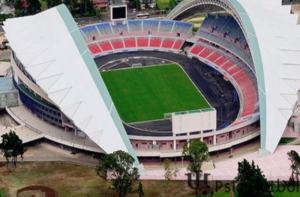 Ask Ticos which building in San Jose they are most proud of and they will likely point to Estadio Nacional, the new 35,000-seat soccer stadium given as a gift to Costa Rica by China. Like in most of Latin America, soccer (or futbol) is wildly popular. Costa Rica’s national team has consistently been a top performer. As for the Chinese, they are eager to buy influence throughout Latin America, Africa, and elsewhere. On another day, we passed a new ocean-going port that was also built by the Chinese. This game of international influence is nothing new. After all, the French gave the United States the Statue of Liberty back in the 1880s.
Ask Ticos which building in San Jose they are most proud of and they will likely point to Estadio Nacional, the new 35,000-seat soccer stadium given as a gift to Costa Rica by China. Like in most of Latin America, soccer (or futbol) is wildly popular. Costa Rica’s national team has consistently been a top performer. As for the Chinese, they are eager to buy influence throughout Latin America, Africa, and elsewhere. On another day, we passed a new ocean-going port that was also built by the Chinese. This game of international influence is nothing new. After all, the French gave the United States the Statue of Liberty back in the 1880s.
Coffee and Handicrafts
Heading north through the Central Valley, we visited a coffee plantation, a butterfly farm, and the artisan village of Sarchi, home of Costa Rica’s national symbol, the handpainted oxcart. These oxcarts were once essential tools for transporting coffee beans. They are true works of art, with elaborate and colorful designs, and are still made locally in small factories by traditional methods. These same artisans build beautiful smaller handicrafts that we had a chance to view and purchase.
After viewing a coffee plantation and gaining a better appreciation for how much work it takes to grow and process coffee, I won’t complain for awhile about the price for a cup of coffee, or “cafe” in Spanish.
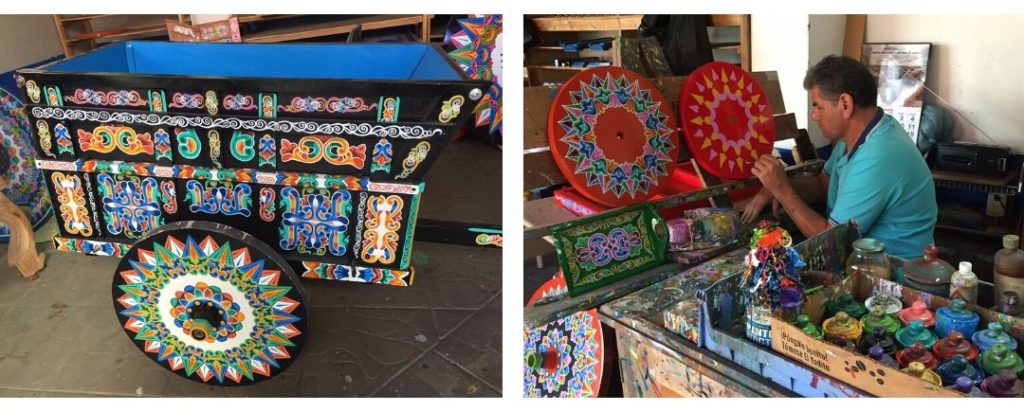
Fortuna, Hot Springs and Volcanos
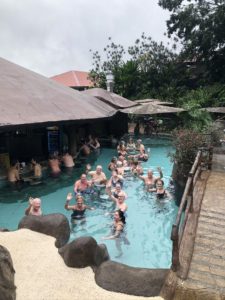 The trip north passes through some of the most spectacular mountain scenery, but at times the roads are treacherous. We gained a real appreciation for our skilled bus driver and congratulated ourselves for not renting a car. We headed toward another popular tourist destination, the hot springs surrounding Arenal Volcano. We stayed nearby in La Fortuna, a small town with a nice vibe and plenty of shops and restaurants.
The trip north passes through some of the most spectacular mountain scenery, but at times the roads are treacherous. We gained a real appreciation for our skilled bus driver and congratulated ourselves for not renting a car. We headed toward another popular tourist destination, the hot springs surrounding Arenal Volcano. We stayed nearby in La Fortuna, a small town with a nice vibe and plenty of shops and restaurants.
The hot springs were one of my favorite stops. At the resort we visited, warm mineral water flowed through a series of man-made pools. I could have spent a lot more time there!
As for the volcano, Arenal remains active, but the last eruption was in 1968, when lava destroyed two small towns and killed 87 people. There is also a large lake nearby with the same name, Lake Arenal, that is important to the nation’s energy production and also a popular spot for international retires and tourists.
Surprise! It Rains in the Rainforest
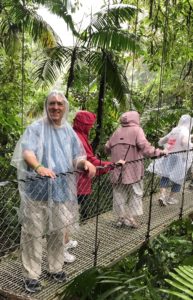
Heading west from La Fortuna, our tour continued through more breathtakingly scenic countryside and stopped at a rainforest attraction. It featured a series of hiking trails and hanging bridges, at different levels of difficulty. Not surprisingly, it was raining hard the morning we arrived. We had been adequately warned ahead of time by our tour guide, and most of us donned our rain gear and didn’t let the wetness deter us. I opted for a hiking trail of only moderate difficulty with two suspended, or hanging, bridges. It was an experience to be walking on the bridge above the rainforest, and after a few minutes, the rain didn’t matter. At each stop, those on the tour who didn’t feel capable to do that day’s activity always had an option, such as a restaurant or shop.
Costa Rica’s Pacific Beaches
We’re beach people, so as much as we enjoyed the Central Valley and mountains, we couldn’t wait to see Costa Rica’s storied beaches. As we headed west through the city of Liberia and toward the coast, we passed through a more arid section of Costa Rica. With the rainforest behind us, the terrain now reminded us more of West Texas, with short, scrubby trees and cattle ranches. The temperatures rose as we approached the coast, but the humidity dropped.
Our tour included two distinctively different beaches. The first was a high-end beach resort in the Guanacaste region. We stayed two nights at the J.W. Marriott Guanacaste Resort & Spa. It was the perfect spot for relaxing in luxury in a tropical setting. The swimming pool was huge, supposedly the largest infinitity pool in Central America. The meals here were among the best buffets on the entire tour. The beach was a bit disappointing, at least for us, who are used to Florida’s nice beaches. The main action here seemed to center around the pool, not the beach.
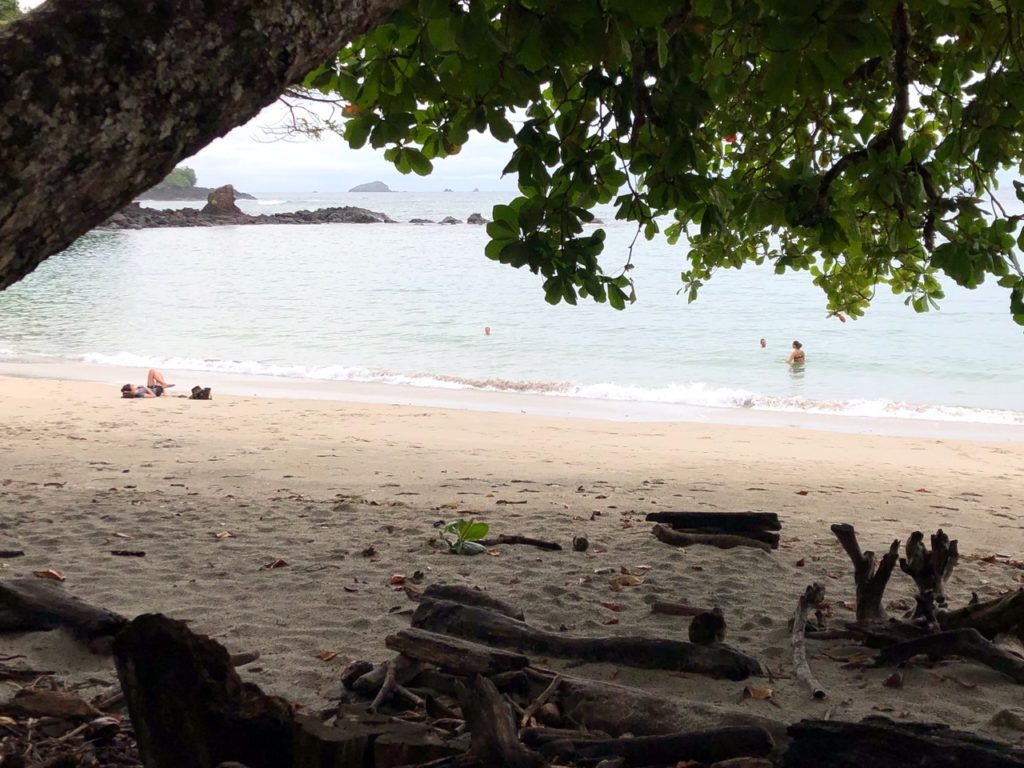
We next traveled further south along the Pacific Coast, passing through the popular beach tourist town of Jaco, and arriving at Manuel Antonio National Park. Compared with Guanacaste, this region is more lushly green but also much more humid. Manuel Antonio is Costa Rica’s most famous national park, a small-but-beautiful jungle environment with well-maintained walking trails and plenty of monkeys and other wildlife. At the other end of the park, as a reward for a moderately rigorous 30-minute hike, the view opens up onto the gorgeous beach. It is rimmed by mountains, and the shoreline is shaded by nearby trees. Here, the sand is white and the Pacific’s waters are warm and swimmable. It’s a popular beach with locals and tourists. If you want to avoid the hike, there are similar public beaches nearby that can be accessed easily from the hotels.
Wrapping Up the Tour
After leaving Manuel Antonio National Park, we headed back to San Jose, where the tour ended. Our final evening was at the elegant Hotel Real Intercontinental, located in the upscale Escazu section of San Jose. Nearby was the four-story Multiplaza Escazu, a world-class shopping mall. Several North American, European, and Asian corporations have regional offices in this section of San Jose.
Nine days is a nice length for a tour. It enabled us to see much of what this nation offers, but certainly not everything. This trip left many of us hoping to come back and see more of Costa Rica. Perhaps next time we will be brave enough to travel more independently, but for this trip, we are happy with our choice of joining an organized tour with a guide.
So for now, pura vida, Costa Rica, and hasta la vista!
Got comments? We love to hear from our readers! Please scroll down and add your comments in the section below. Just remember to keep it clean; this is a “PG” rated blog. We also do not approve of comments that are selling a brand, product or service.
Like this story? Subscribe via email for free to receive all future stories from This Retirement Life. Our blog explores topics of interest to retirees and those planning for retirement. Please see subscription information to the right of this story or below, and sign up today.

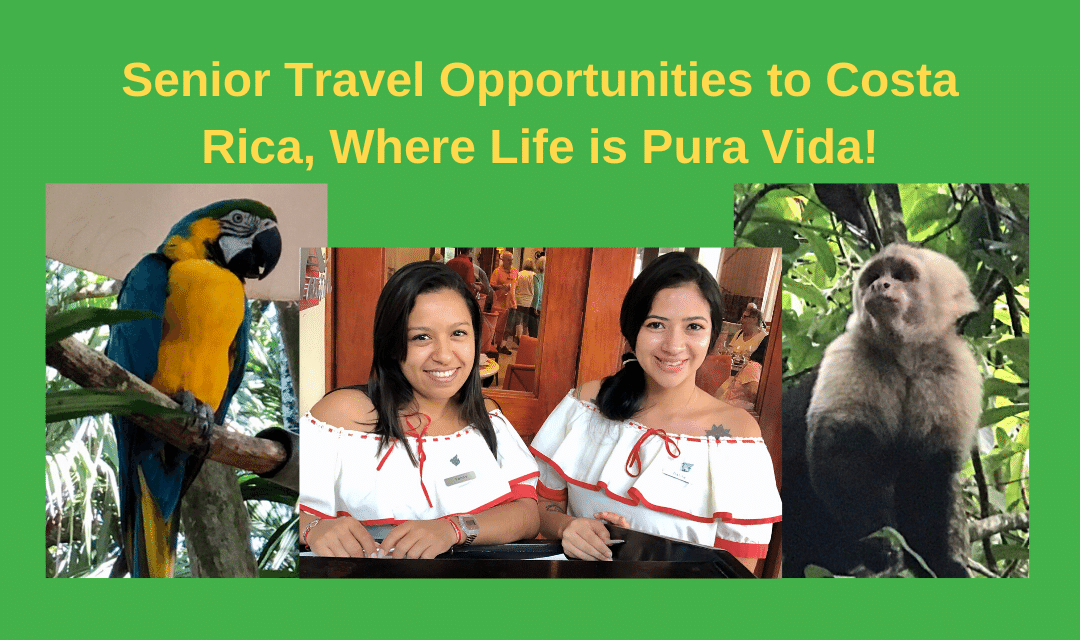
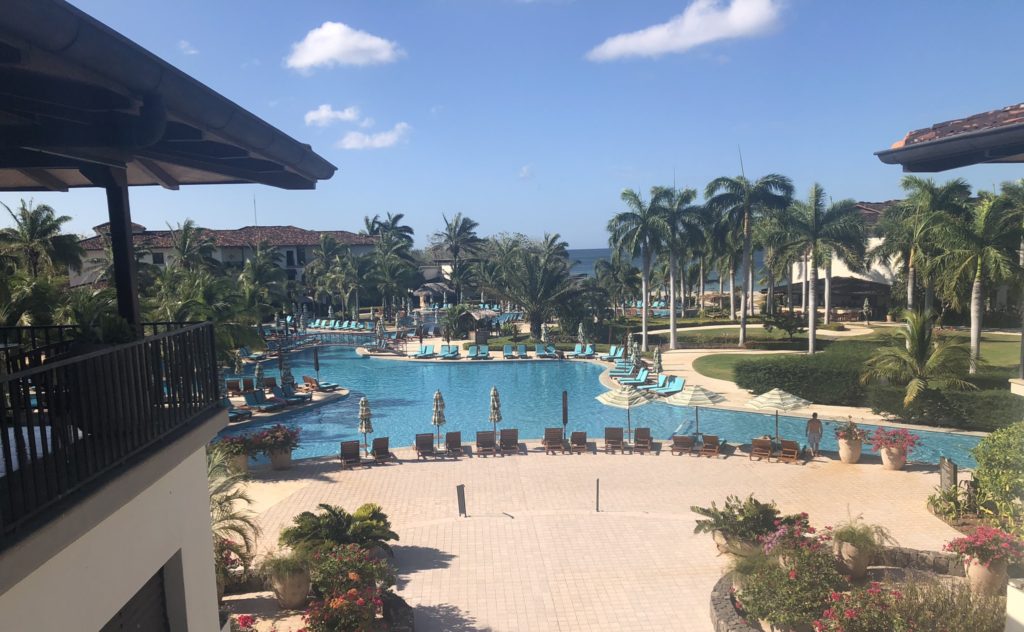



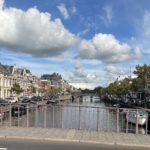
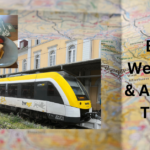


Trackbacks/Pingbacks